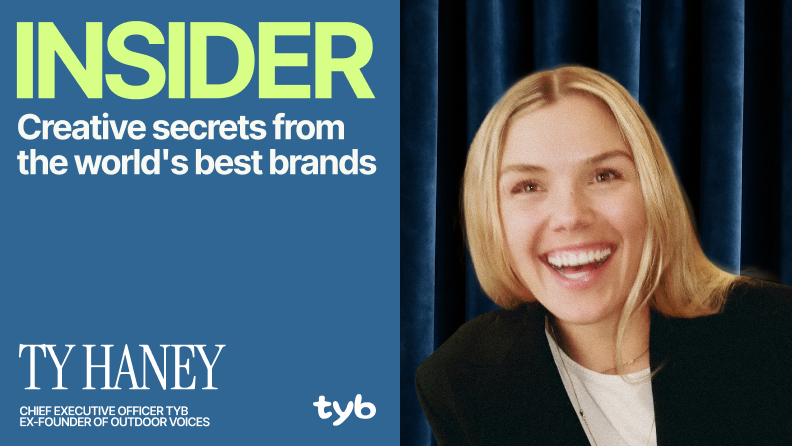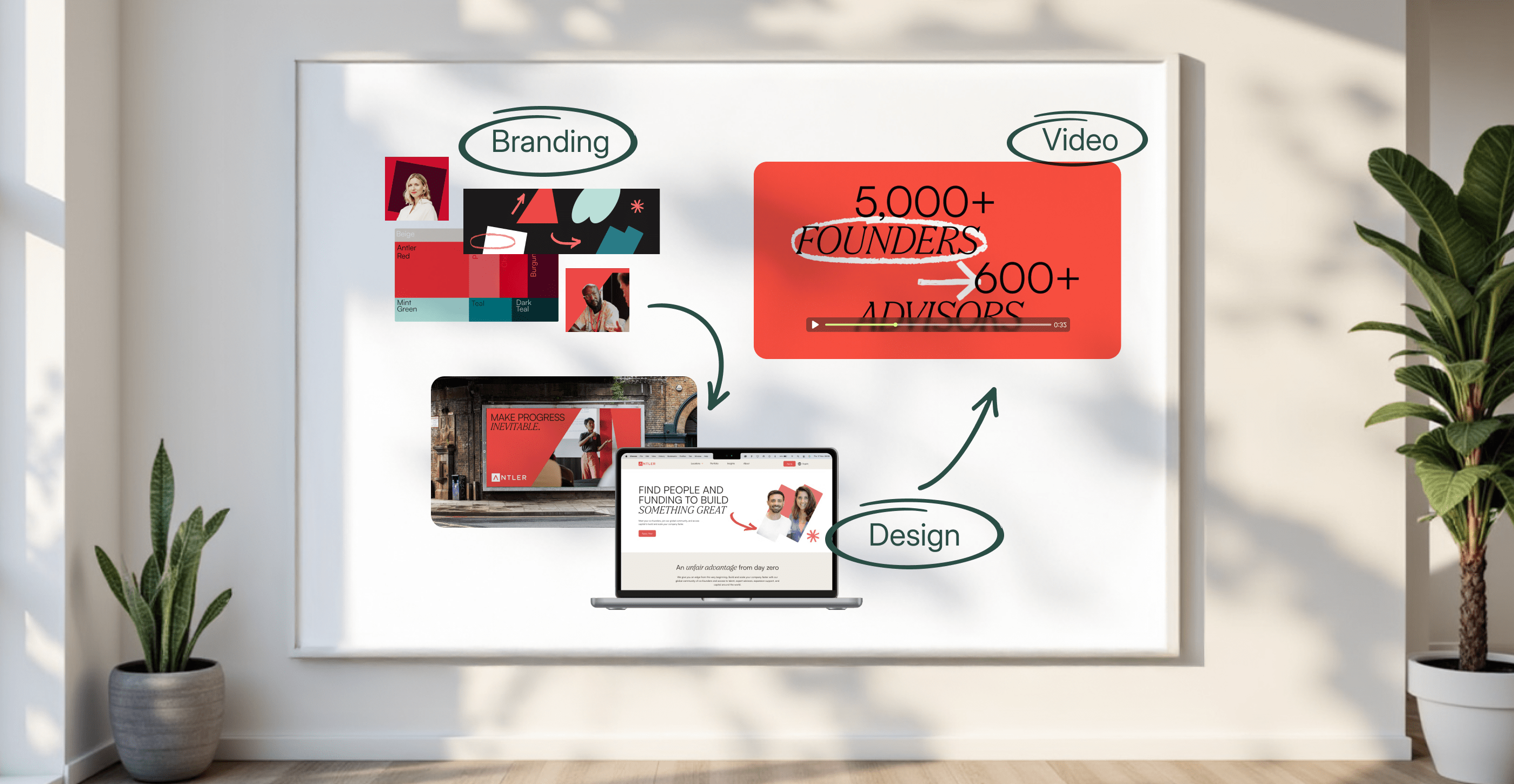7 Brand Guideline Examples That Inspire Greatness and Growth

There's a beauty to simplicity. Brand guidelines prove this in both their form and function. Not only do they spell out big-picture rules and concepts—the best ones also give the reasons why. These examples show exactly how well-executed guidelines also become essential foundations for building growth.
Your brand is more than a logo, tagline, and color palette. It’s made up of every interaction that your customers and company have.
When you consider the brands that stand out to you, think about the interactions you have with them. You know that the tone they use on their website will come across in the newsletter design you subscribe to or the product and sales emails you receive.
Great brands don’t happen magically. They are the result of having clear-cut brand guidelines that drive every decision in an organization. But how do you go about creating and maintaining them?
What you'll learn...
What Are Brand Guidelines?
Brand guidelines are the source that everyone in your organization goes to when they have questions about look, tone, feel, colors, and style. These should be well-defined specifications for how your brand is presented across every interaction.
They include everything that shapes your brand identity—from visual elements like logos and logo usage guides to more abstract details like voice and tone.
Brand guides vs. style guides
Sometimes brand guides and style guides get used interchangeably. However, they are two different assets that share a little bit of overlap.
While brand guides cover everything–including colors and fonts–they also deal with the big-picture stuff, like voice and mission. Style guides focus only on the nitty-gritty of font, color, and spacing that drive what your design team creates.
Comprehensive brand guidelines also communicate the reasons for these rules. For example, Salesforce's brand guide includes that the company is committed to improving communities around the world. To do this, their brand guide includes guidance on using an honest, helpful, and inspiring voice and tone in all branded communication.
The role of brand guidelines
The purpose of brand guidelines is to standardize your company’s brand by guiding how it should look and sound when creating marketing or communication assets.
No matter how well-defined your brand guidelines are, they won’t help if your team doesn’t know about them. We recommend making your brand guidelines easily available on an intranet software, Notion page, or wiki.
Even better, make a review of them part of your onboarding process for new employees. It will help new employees understand your business and customers better, and set them up for success in the long run.
What Teams are Involved in Developing Brand Guidelines?
Who has a hand in the development of a brand guide will vary from place to place.
Large organizations
In large organizations, a brand department may lead the brand guidelines development process, along with support from cross-functional teams like sales, marketing, and customer success. These teams provide insights on tone, voice, and the messaging that will resonate best with your audience. The brand department uses this information to develop writing and visual specifications that align with the company’s desired brand image.
Small- and mid-size organizations
Smaller organizations or agencies without a robust brand or design department can look for outside help by collaborating with an experienced design company to develop their brand guide. Working with an external team is a viable option for businesses that don't want to incur overhead costs or do not have the day-to-day need for an in-house branding team.
What Should be Included in Your Brand Guidelines?
There’s no right size for a brand guide. Some can be like the 50-page brand guide from Slack. Others can be five to ten pages. The important thing is that they need to include the right information and guidance so that your teams can do their best work.
There are two main groups of elements in a brand guide—visuals and voice. Visual elements are the building blocks of your brand's design attributes. Voice is the tone and language you use that determine what your brand sounds like across every channel you use.
Visual brand elements
Visual elements are the specific features that determine your brand's look and feel, including:
- Brand colors and color palette
- Fonts and typography
- Logos
- Icons and artwork
- Photography and video
Choosing the right visual elements is vital because they define your brand's visual identity. And your brand's visual identity shapes customers’ perceptions of your business.
Visual brand guidelines can also influence the style of photography and videography you use in your design assets. Many companies use their brand guidelines to help when planning photos or in choosing what kind of stock photography can be used.
Voice specifications
Voice specifications influence written content like website copy and social posts and audio content such as video or podcast scripts. Voice specifications are the nuances of how you want your brand to communicate.
Your brand voice is your organization’s personality. For example, Salesforce's brand voice is "always truthful and genuine, avoiding exaggeration or misdirection." Here’s an example from this tweet:
🥧 Pies are great for dessert, but for showing your data? Not so much.
— Salesforce (@salesforce) May 5, 2023
Here's what you can do instead for better data viz 📊: https://t.co/On7LqBm0Ls
Having a distinct brand voice is a great way to build a strong emotional connection with your target audience and win their trust.
On the other hand, your brand tone determines how you express your brand's personality. Unlike your brand voice, the brand tone changes frequently depending on the context of communication.
For example, Shopify's voice adapts to different contexts. They adjust their tone based on the perceived emotional state of who they are communicating with. Most organizations use it to help guide interactive communication like social posts and direct or private messages.
It's also helpful to highlight your brand values, persona, and brand essence in the document. For example, see how Slack pulls this off.
Why Are Brand Guidelines Important?
Brand guidelines are important because they help you achieve consistency in your interactions and efficiency when creating assets. A consistent brand image is key to building deeper connections with your target audience and boosting customer engagement over time.
Brand guidelines help you achieve brand consistency
According to Forbes, presenting a brand consistently across all platforms can increase revenue by about 23%. It also helps make you top of mind when your audience is considering their options. Brand guidelines help you achieve consistency by ensuring consistency and reliability in how your company communicates with its audience.
Brand guidelines lead to more design efficiency
Business moves fast—which means your design and marketing teams need to move even faster. Brand guides increase design efficiency that not only get your marketing efforts launched faster, but reduce mistakes in tone, voice, or look. Your design team won’t have to waste time figuring out the small things.
How Often Should You Update Your Brand Guidelines?
When we asked a group of marketers and creatives about brand guidelines, 98% said keeping their brand guides up to date was important. In terms of how often they updated their brand guides, 80% indicated that they do so annually or biannually.
Brand Guideline Examples
Here are seven effective brand guidelines from some of our favorite brands to inspire you!
1. Slack
Check out Slack's brand guidelines.
Slack's brand guide starts by providing detailed information about the company's brand identity, including its core values, persona, and personality, and the primary problem Slack is solving for its audience. These pieces of information set the stage for the visual elements and writing specifications presented later in the document.
In terms of the visual elements, Slack provides specific information about logo usage in different sizes and on other backgrounds. It also covers granular information regarding brand architecture, typography, and trademarks for partners.
2. Spotify
Check out Spotify's brand guidelines.
Spotify pays lots of attention to its logo. Its style guide provides information on when and how to use the logo and icon, and it also outlines examples of logo misuse so you know what to avoid. Logo usage guidelines are important for internal teams and external partners. Spotify’s brand guide includes logo usage information including how it should be used on different background colors.
3. Uber
Check out Uber's brand guidelines
Uber describes itself as "a bold brand and backs it up with details on tone, voice, and look. The brand guidelines contain nine core elements that every brand guide should have:
- Color
- Logo
- Iconography
- Composition
- Motion
- Illustrations
- Photography
- Typography
- Tone of voice
Uber provides clear-cut instructions on how to implement each of the nine specifications. For example, it says "cut the adverbs" and "pick strong verbs" to achieve the desired voice and tone.
The brand guidelines also specify the color usage proportions. For instance, "Safety blue is only used for critical moments that warrant care between Uber and the user." The document also outlines examples of wrong brand color usage.
4. My Trees
Check out MyTrees' brand guidelines
My Trees is a pro-climate company committed to helping people embrace eco-friendly actions, and this mission is reflected in its brand's visual identity. For example, the brand colors are inspired by nature, and all the illustrations are tree-like.
5. Salesforce
Check out Salesforce brand guidelines
Like Uber, Salesforce brand guidelines provide detailed information on the company's history and brand promise.
What stands out the most is Salesforce's visual identity. The logo is a cloud, symbolizing the company's commitment to the environment. The brand’s primary colors are inspired by the "day and night skies," while the secondary colors are drawn from the earth.
Also worthy of note are the different characters with human qualities that reinforce the brand's honest, helpful, and inspiring voice.
6. Twitter
Check out Twitter's brand guidelines
Twitter’s brand guidelines focus on the best practices for Twitter logo usage, including logo placement on different backgrounds, brand colors, and detailed information on logo misuse.
7. Mural
Check out Mural's brand guidelines
Your Brand Guidelines Define Your Success
Superside client TransACT was able to work 70x faster once they had functional brand guidelines in place. See the creative.
Developing great brand guidelines is the best way to create and maintain a unique identity for your organization, but it can be difficult to pull off without the right support. Superside can support your brand guide creation process at scale—whether you're starting from scratch, looking to give your existing brand document a makeover, or just need help developing some visual elements.
You may also like these

10 best product design companies of 2025
In a world flooded with digital products, the difference between a product that gets adopted by target audiences and one that gets ignored is design.Modern users are no longer merely satisfied with products that work. They seek intuitive, beautiful experiences and products they truly enjoy using. In sectors such as SaaS, consumer tech, healthcare and fintech, design shapes brand perception, product adoption, user engagement and, ultimately, loyalty.For enterprises and high-growth brands, the stakes are high. Every design misstep and delay could translate into lost relevance. Yet many in-house design teams have too little bandwidth to deliver products at the speed, scale and quality now required. On the other hand, traditional agencies move too slowly or aren’t built for the level of iteration modern tech enterprises require.This is where a top-notch, dedicated product design service can tip the balance in your favor. In this article, we unpack why great product design is a non-negotiable. We also share 10 product design companies that can help you create an in-demand, highly successful product.Why great product design is a competitive advantage for enterprise brands
Why brands that build community get customers for life
Ads don’t seem to hit like they used to. Your customer acquisition cost is through the roof. And even when you do bring in customers, it feels like they’re only with you for a moment before disappearing forever. Some brands might be able to sustain their growth in these conditions, either because they have a massive war chest or their customers make massive transactions.But for most, there’s a better way to grow. By building a community and a fan base, you can get customers for life.At Superside’s Insider Summit, Ty Haney, three-time founder and current CEO of Try Your Best, shared how her approach to community has catapulted the brands she’s built to new heights—and how her latest venture has turned this into a business.What is community-led growth?In short? Shifting from acquiring customers to building a fan base. It means creating experiences that reward customers, granting them access to exclusive perks, and giving them something to get excited about beyond the transactional. It’s about giving them opportunities to become obsessed with your product and your brand until they become micro-influencers.
5 creative marketing services that change enterprises’ ROI in 2025
With digital advertising projected to bring in 73.2% of global ad spend, the pressure to consistently produce standout creative at scale is real. For a chance to connect with target customers, enterprise teams must now deliver high volumes of top-quality marketing creative across multiple channels.For most enterprises, increased output is only one part of the challenge. It’s usually just as tough to achieve consistency, speed and good results, especially if resources are limited. And limited they are: Our recent Overcommitted report confirmed that today’s creative teams simply juggle too much.Fortunately, many top marketing executives have come to realize their in-house creative departments can’t do it all themselves. Superside’s customers, for example, experience first-hand how a combination of strategy, data, AI-driven workflows and creative muscle can help them scale smarter, give bandwidth back to their teams and deliver a high ROI.Want to improve your creative production output and deliver eye-popping creative performance results? In this article, we explore what creative marketing is and how it can be applied in enterprise environments such as yours. In addition, meet the top creative marketing services that can help your enterprise achieve stronger results. Let's dive in!










